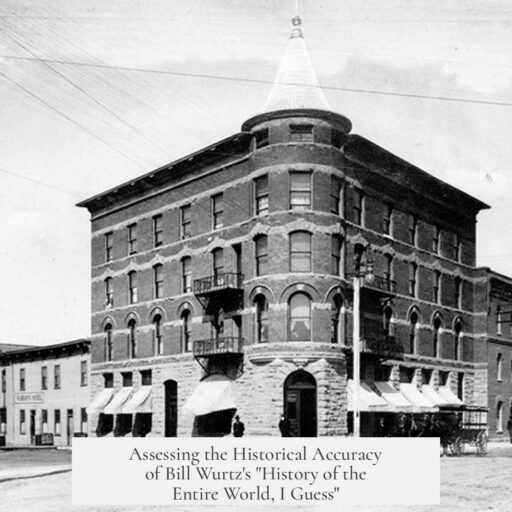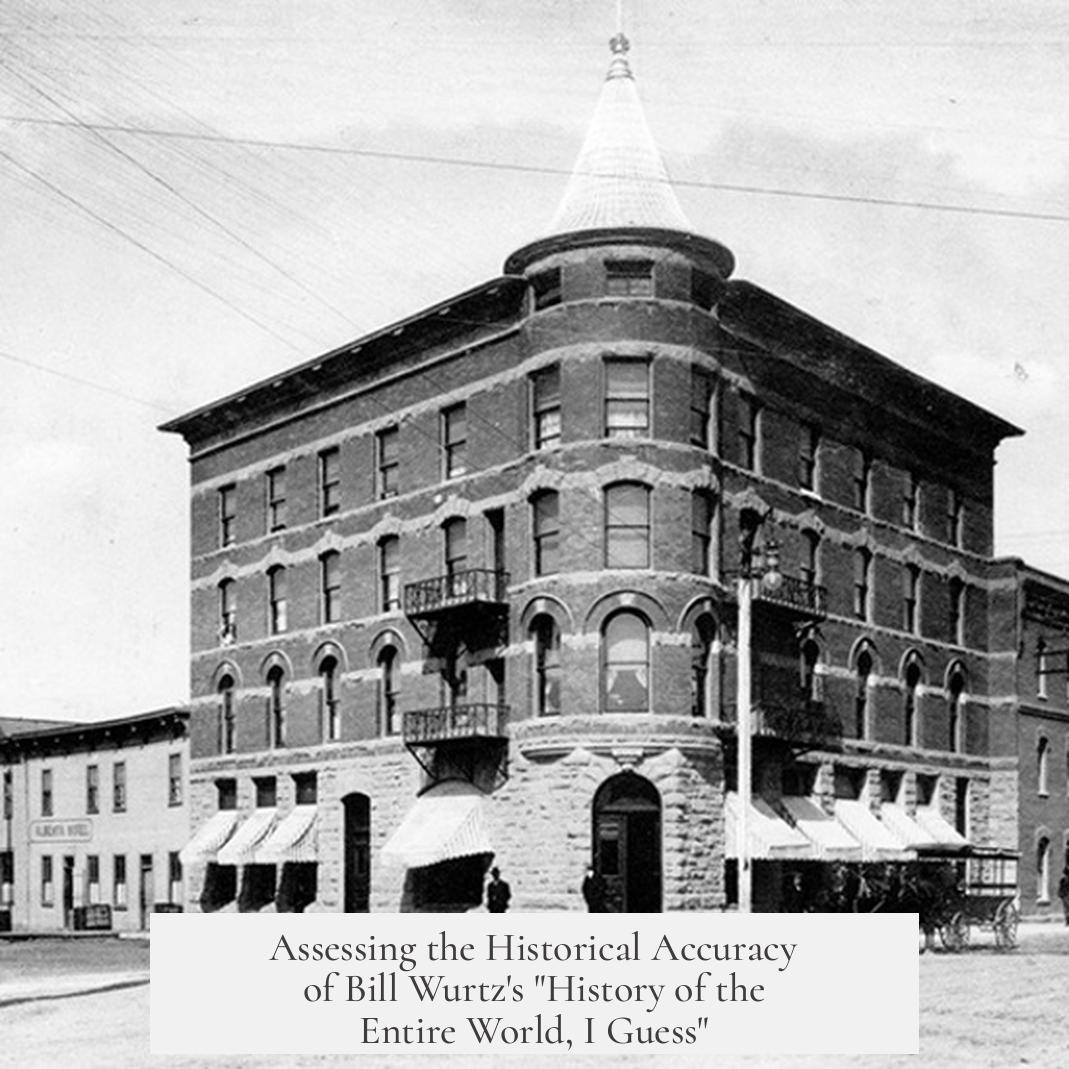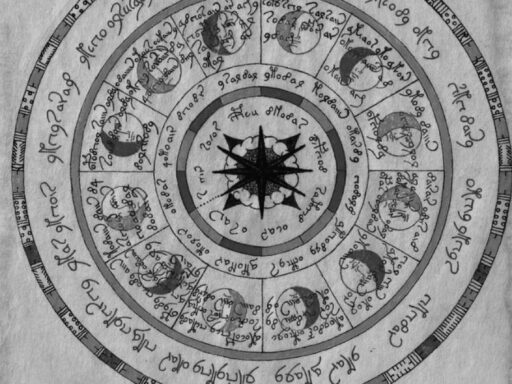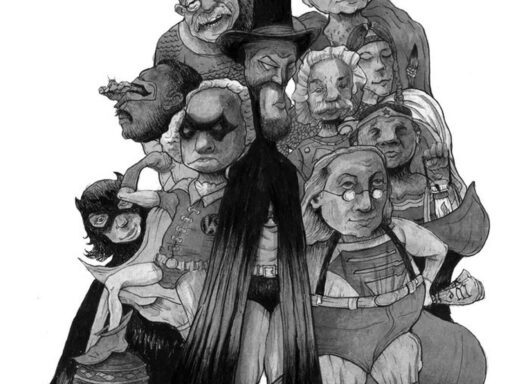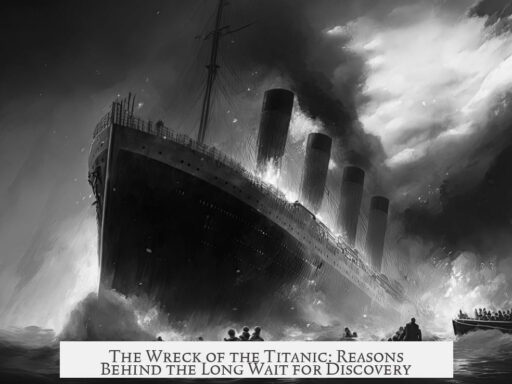Bill Wurtz’s “history of the entire world, i guess.” offers a broad, colorful timeline of world history that is more entertaining than rigorously accurate. It captures major milestones quickly, but many details are oversimplified, out of order, or slightly inaccurate. The video does not replace scholarly historical accounts. It works better as a jumping-off point for curiosity than a precise lesson.
Wurtz’s approach condenses complex events into an 18-minute fast-paced summary. This brevity obscures nuances and meaningful context, making some parts feel banal and incomplete. The timeline relies heavily on well-known keywords from basic educational sources, such as Wikipedia or grade-8 history books. It summarizes events like the Black Death, the Renaissance, and the printing press in a single phrase each.
The video notably omits exact dates, which can confuse viewers trying to understand parallel developments in different regions of the world. For example, the Silk Road’s origin—trade between China and the Mediterranean—actually predates Jesus by centuries. This crucial timeline detail is missed. Likewise, the Spanish Inquisition appears out of historical order, seeming earlier than it was.
Many specifics are simplistic or misleading:
- Wurtz implies the Pope’s role during Rome’s fall was similar to its later medieval influence. In reality, the Pope was primarily a local bishop engaged in regional politics during late antiquity.
- The Black Death is said to have killed half of Europe. Most modern historians estimate about a third of the population died.
- The Muslim conquest of Iberia is shown as total, overlooking the persistent Christian kingdoms in the north that shaped later events.
- The printing press is equated simply to “books,” ignoring the existence and importance of manuscripts and book culture before Gutenberg, as well as the nuanced social impact of print proliferation.
- Maps and claims about the Ottoman Empire preventing trade after Constantinople’s fall are misleading; Ottomans did not fully block trade to Europe, nor could they cut off Indian trade routes.
- The Portuguese began Atlantic exploration decades before 1453, contrary to the video’s suggestion.
- Dinosaur extinction is attributed to meteor strikes, but scientific debate remains over causes, including volcanic activity and tsunamis.
- The Maya civilization is portrayed as “disappearing” around the Crusades era, yet the Maya declined gradually from 900 AD and survived in various forms until the Spanish conquest.
- In the French Revolution segment, the ruler shown is Louis XVI, not Louis XIV as stated.
The video overlooks some cultural richness. It concentrates heavily on central Mexico’s Maya but ignores other Mesoamerican groups like the Mixtecs and Zapotecs. It also skips important Andean civilizations such as Wari and Tiwanaku. This omission simplifies Americas’ pre-Columbian history.
Regarding Chinese history, the Qin dynasty’s unification is mentioned correctly. However, the claim that it adhered to Confucianism is inaccurate. The Qin favored Legalism while Confucianism became prominent only with the succeeding Han dynasty, which combined Confucian principles with Taoism.
Despite inaccuracies, Wurtz’s work has value. It introduces global history’s broad strokes to audiences unfamiliar with world cultures, especially pre-Columbian Americas. The video’s humor and style reach viewers who might otherwise avoid history. It can spark interest for deeper learning.
| Aspect | Assessment |
|---|---|
| Accuracy | Mostly broad strokes; superficial and sometimes inaccurate |
| Historical Details | Lacks dates; oversimplifies events; some timelines off |
| Cultural Coverage | Focuses on popular cultures; omits many important civilizations |
| Value for Audience | Good for sparking interest; not for detailed study |
In summary:
- The video is an entertaining, fast overview, not a thorough history.
- Key dates and complex contexts are often missing or distorted.
- Many historical nuances and diverse cultures receive limited attention.
- Certain commonly believed facts, such as the Black Death’s death toll or the fate of the Maya, are presented simplistically.
- The work serves well to introduce viewers to global history and inspire curiosity, but further research is essential for accurate understanding.
Bill Wurtz just uploaded his “history of the entire world, i guess.” How historically accurate is it?

So, Bill Wurtz — the eccentric, jazzy internet maestro — has dropped a new gem: “history of the entire world, i guess.” Its viral charm is undeniable. But here’s the million-dollar question: how historically accurate is it? In a nutshell, it’s more “loosely inspired by history” than a strict textbook. Let’s unpack why, adding a sprinkle of humor and a dash of facts along the way.
Skimming History: Accuracy with a Side of Speed
If you watch Bill’s video expecting an exact history lesson, well, you might feel a bit like you just ran a marathon only to find out you were sprinting through a speed round of trivia.
His work is basically a glorified timeline ripped right from Wikipedia’s Key Words boxes — yes, the little summaries at the end of each chapter in a grade-8 history book. So technically, it’s fact-based. Bill isn’t hallucinating ancient kings or totally rewriting events. But it doesn’t dig below surface level.
The video also omits the usual suspects of history vids: no dates! That means aligning events across continents gets tricky. One moment, the silk trade drifts by; next, the Black Death decimates Europe. The *when* is fuzzy, forcing viewers to connect historical dots without a map.
Here’s where brevity becomes a double-edged sword. Bill’s rapid-fire approach turns profound moments into buzzwords: “Black Death kills people,” “printing press means books.” It’s an 18-minute long inside joke that only clicks fully if you’re already a history buff.
Oops, Missed a Beat: Not-So-Accurate Bits

We can’t talk historical accuracy without addressing the missteps. Some errors are small, others bigger than the fall of the Roman Empire itself.
- Silk Road Timing: Bill places the silk trade around the time of Jesus or later, but in reality, it’s way older — the trade between China and the Mediterranean was humming well before that.
- Spanish Inquisition: The video gives the impression the Spanish Inquisition was earlier than it was, skipping the nuance of Spain’s fragmented history.
- The Pope’s Role: Bill treats the pope like he’s a medieval superhero, but in early Middle Ages, the pope was just a local bishop, tangled in Roman politics, not the global religious leader we imagine today.
- Black Death Mortality: Bill claims it wiped out half of Europe — a figure older scholars favored, but modern consensus leans more toward a grim one-third.
- Muslim Conquest of Iberia: The map wrongly suggests complete Muslim control over Iberia—but remember, northern Christian kingdoms were still holding on, setting the stage for centuries of conflict and coexistence.
- Printing Press: Bill declares the printing press invented books. Really, books existed way before Gutenberg. The printing press made book production faster and cheaper but didn’t invent the concept.
- Sykes-Picot Agreement: The video nods to this infamous deal dividing the Middle East, but historical experts say it didn’t quite draw the neat borders Bill implies.
- Maya Civilization: The Maya didn’t “disappear” mysteriously, as Bill suggests. Their decline began around 900 AD, but some city-states and rural populations survived until the Spanish arrived.
- Mesoamerica Coverage: Bill focuses on the Mayans and central Mexico but skips other major cultures like the Mixtecs and Zapotecs.
- Qin Dynasty’s Philosophy: Bill credits Confucianism to Qin China, but it was actually the Han dynasty that embraced Confucianism in combination with Taoism and Legalism.
- Ottoman Empire & Spice Trade: Bill states the Ottomans blocked Europe’s spice trade—Not true. The Ottomans didn’t cut off trade after conquering Constantinople, and the Portuguese began exploring Africa’s coast decades earlier.
- Extinction of Dinosaurs: Bill pins it on meteors, but science debates the cause—volcanoes, tsunamis, and yes, possibly meteors.
- French Revolution: Bill messes up his monarchs—it’s Louis XVI, not Louis XIV, who met the guillotine.
So, Why Watch It At All?
You might be wondering, “With all these inaccuracies, is this video worth my precious screen time?” The answer: yes, absolutely!
Here’s the secret sauce — Bill Wurtz’s video functions more like a spark plug for curiosity than a history manual. It introduces sweeping eras and lesser-known corners of history, like the pre-Columbian Americas, which many people barely know about. Even the cryptic mentions push viewers to learn more on their own.
The video has a quirky, catchy rhythm that sticks in your brain. It’s memorable enough that you might catch yourself humming “history of the entire world” during your morning coffee and decide to Google “Who were the Mixtecs anyway?” That’s powerful.
What Makes Bill’s Style So… Bill?

Bill Wurtz’s charm lies in his whirlwind storytelling, quirky animations, and musical flair. It’s a reminder that history can be fun and engaging, especially when juxtaposed against dry textbooks.
His minimalist approach tells us stuff like:
- The world’s history is huge. Trying to cram it into under 20 minutes means simplifications and omissions.
- History is about names and dates, sure, but it’s also about connections, causes, and consequences — and that’s what’s missing here.
You don’t watch this video to become an expert. You watch it to get intrigued, entertained, and inspired to dig deeper.
Practical Tips for Digesting This (and Similar) History Videos
Love Bill’s video? Here’s how to turn that fun watch into a real learning opportunity:
- Fact check: Treat the video like a fun appetizer, not a full meal. Cross-reference details with reliable sources.
- Use it as a roadmap: Take the key words and topics Bill mentions and look them up later. For example, search “Sykes-Picot Agreement” or “Mayan decline” for richer details.
- Look beyond the video: Explore history books or reputable websites that explain the nuances Bill glosses over.
- Embrace curiosity: Don’t get caught up in minor errors—use them as springboards to learn why they’re wrong. This builds historical thinking skills.
Wrapping It Up
Bill Wurtz’s “history of the entire world, i guess” is a fun, fast-paced summary with a sprinkling of facts — but it isn’t a reliable guidebook to history. It’s a quirky collage of moments that introduces vast epochs and cultures, sometimes with questionable timelines and oversimplifications. But it’s also a gateway, enticing people who’d otherwise avoid history to take a peek and maybe, just maybe, dig deeper.
Ultimately, if you want *history served neat and sparkling* with zero fluff, Bill’s video isn’t your cocktail. But if you’re looking for a fun, catchy spark to light the fire of curiosity, it’s definitely a shot worth taking.
